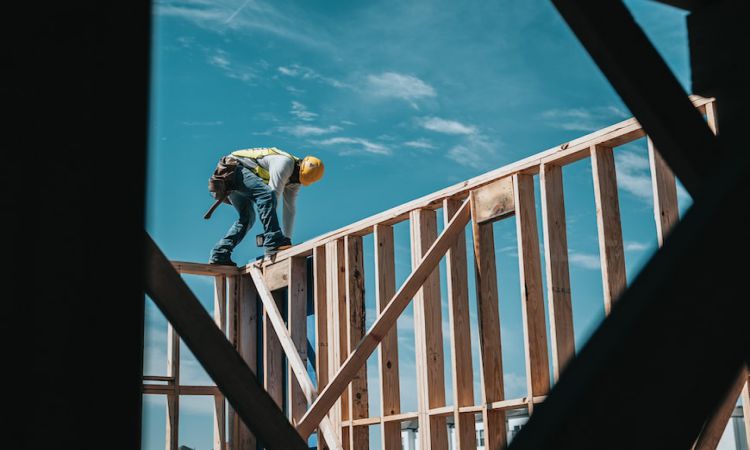 Do you have an elevated job or plan on taking one in the near future? Are you worried about the risks associated with working high up off of the ground? If so, then this text is here to help. This blog post will discuss risk management techniques that should be implemented when taking an elevated job position and provide strategies to ensure maximum safety while on the job.
Do you have an elevated job or plan on taking one in the near future? Are you worried about the risks associated with working high up off of the ground? If so, then this text is here to help. This blog post will discuss risk management techniques that should be implemented when taking an elevated job position and provide strategies to ensure maximum safety while on the job.
Through instruction on proper protocol and knowledge of essential safety equipment, this blog post will equip readers with tips to stay safe and protect themselves from potential danger when taking part in this unique type of work. With valuable insight into what it takes to be a successful height hero, ready yourself for some action-packed advice about how to keep your workplace as secure as possible!
Identify the risks associated with elevated work
Working at height can pose a range of risks to workers, from falls to equipment malfunctions. These risks can result in serious injury or even death, making it essential for employers to take steps to reduce the likelihood of accidents occurring. To minimize the hazards associated with elevated work, employers can implement measures such as providing suitable fall protection equipment, conducting regular safety audits, and ensuring that employees are trained in how to operate equipment safely and recognize potential hazards. By being diligent in risk management, employers can create a safer working environment for their employees and prevent accidents and injuries.
Learn safe practices for working at heights
When it comes to working at heights, safety should be your top priority. Whether you are up on a roof or high up on a scaffold, it is important to take proper precautions to ensure your safety. This includes using the right equipment such as a harness and anchor points, and ensuring that guard rails are in place. By following these safe practices, you can reduce the risk of falls and injuries while on the job. Remember, working safely at heights is not only important for yourself but for those around you as well. Keep yourself and your colleagues safe by always prioritizing safety when working at heights.
Understand pre-planning, inspection, and emergency procedures
Working at an elevated worksite can be an exciting and challenging experience. However, it also comes with its own set of risks and hazards that need to be addressed. That’s where pre-planning and inspection come in. By thoroughly assessing the worksite beforehand, you can identify potential hazards and take the necessary steps to prevent them from becoming a danger. Additionally, familiarizing yourself with emergency procedures can save lives and prevent injuries should an accident occur. Taking the time to understand these important aspects of working at an elevated worksite is crucial in ensuring a safe and successful project.
Gain an understanding of the importance of selecting the appropriate ladder type
The sight of someone precariously reaching for a high shelf on a wobbly ladder can make anyone cringe. When it comes to selecting the right ladder, there is more than just height to consider. Different ladder types are designed for varying levels of stability and weight capacity to ensure a safe usage in challenging work environments. Understanding these differences can prevent serious accidents and create a more productive work environment. Whether you are decorating your home, performing basic maintenance tasks, or taking on professional jobs, the appropriate ladder choice is crucial to getting the job done safely and efficiently.
Additionally, many ladder models are equipped with clever features and additional safety measures such as anti-slip mats and stabilizing bars that can provide an extra layer of security.
Explore essential tools to have on hand while working at heights
When working at heights, whether it’s for construction or maintenance purposes, it’s essential to have the right tools on hand to ensure safety. Of those tools, a first-aid kit is especially important. Falls from heights can be particularly damaging, so having the ability to provide immediate treatment for injuries is critical. In addition to a first-aid kit, other essential tools might include properly-fitted harnesses, non-slip footwear, and high-quality safety ropes. While no amount of preparation can completely eliminate the risk of accidents happening, putting these tools in place can help mitigate the risks and keep workers safe while they’re on the job.
Get tips on proper safety equipment
Working at heights can be incredibly dangerous, but with proper safety equipment, these risks can be greatly decreased. When it comes to working at heights, the equipment you use is just as important as the job itself. That’s why it is crucial that you take the time to decide on the right safety equipment and properly maintain it to ensure it is in good working condition. From hard hats to harnesses, there are a variety of tools available that are designed specifically for working at heights.
To ensure your safety when working at heights, it is critical to understand the proper safety equipment procedures in order to prevent accidents and keep yourself safe while getting the job done. Whether you are working on a construction site or performing maintenance on a high-rise building, staying safe requires the right equipment and know-how.
 Height Heroes Unite is a great resource for those who work at heights, providing essential techniques to reduce risk and ensure safe working conditions. Through this guide, workers can gain an understanding of the risks associated with elevated work and proper safety procedures for working at heights, including proper equipment selection and anchoring points. They learn how pre-planning and inspecting job sites helps protect workers from potential hazards, as well as how to spot potential hazards while on the job.
Height Heroes Unite is a great resource for those who work at heights, providing essential techniques to reduce risk and ensure safe working conditions. Through this guide, workers can gain an understanding of the risks associated with elevated work and proper safety procedures for working at heights, including proper equipment selection and anchoring points. They learn how pre-planning and inspecting job sites helps protect workers from potential hazards, as well as how to spot potential hazards while on the job.
Furthermore, they understand why having the right tools on hand is so important while working at heights and get tips on proper safety equipment that should be used. With this main focus on safety first, Height Heroes Unite provides a comprehensive overview of essential techniques for a risk-free elevated job.
By understanding the risks associated with working at heights and following the proper safety procedures, employers and employees alike can create a safer work environment and prevent accidents. Through regular safety audits, proper risk management, and appropriate equipment selection, employers can help ensure their workers are safe while on the job. Additionally, by familiarizing themselves with pre-planning procedures, inspection practices.




